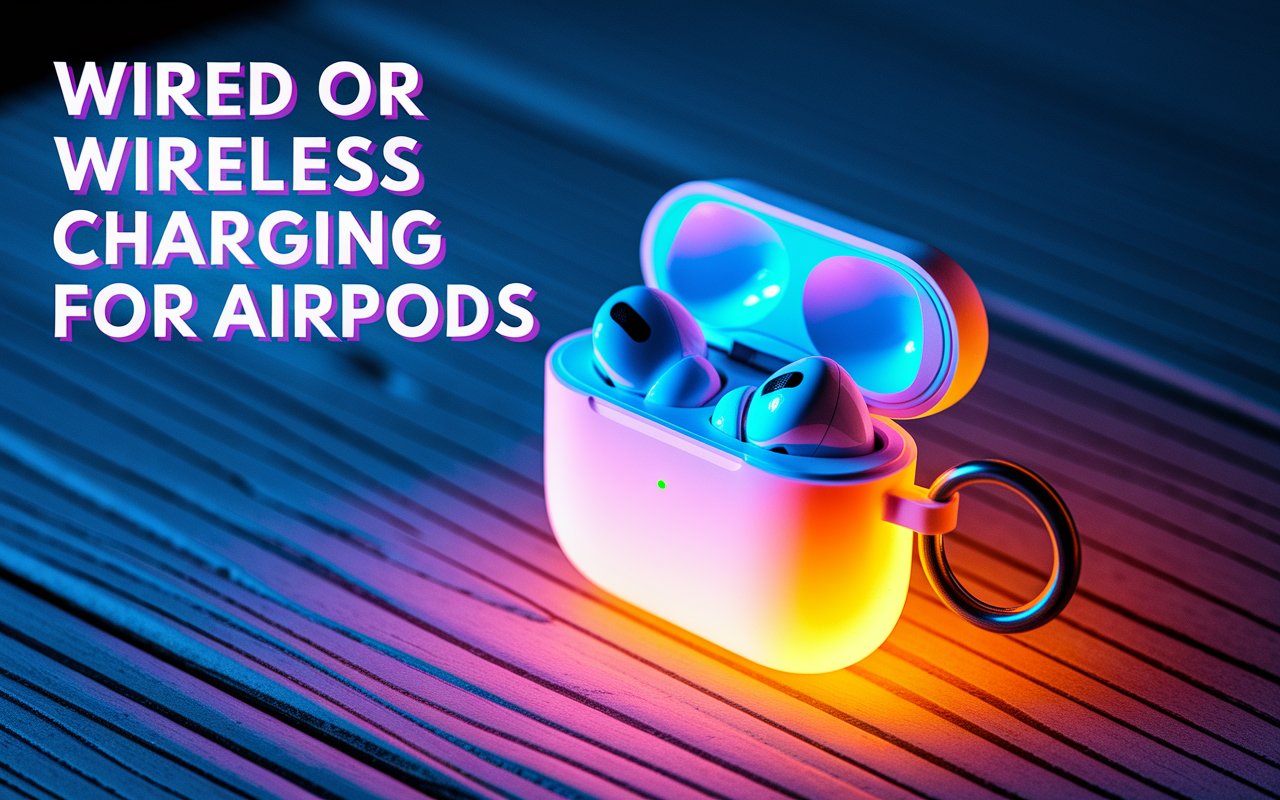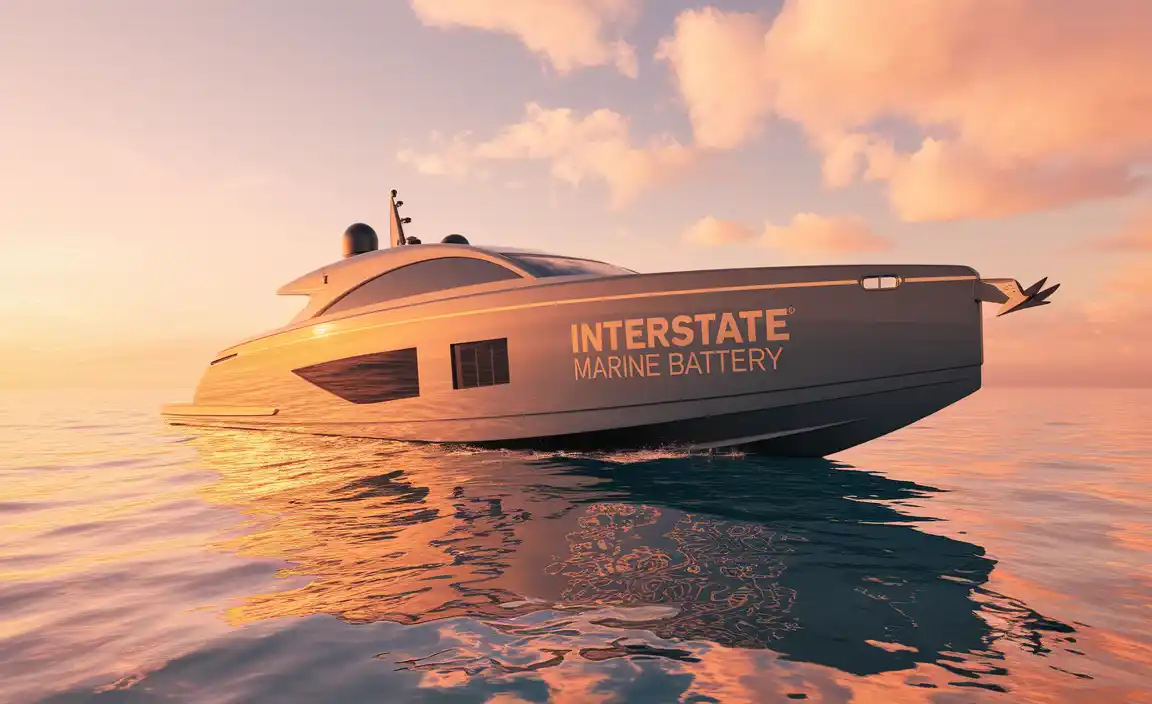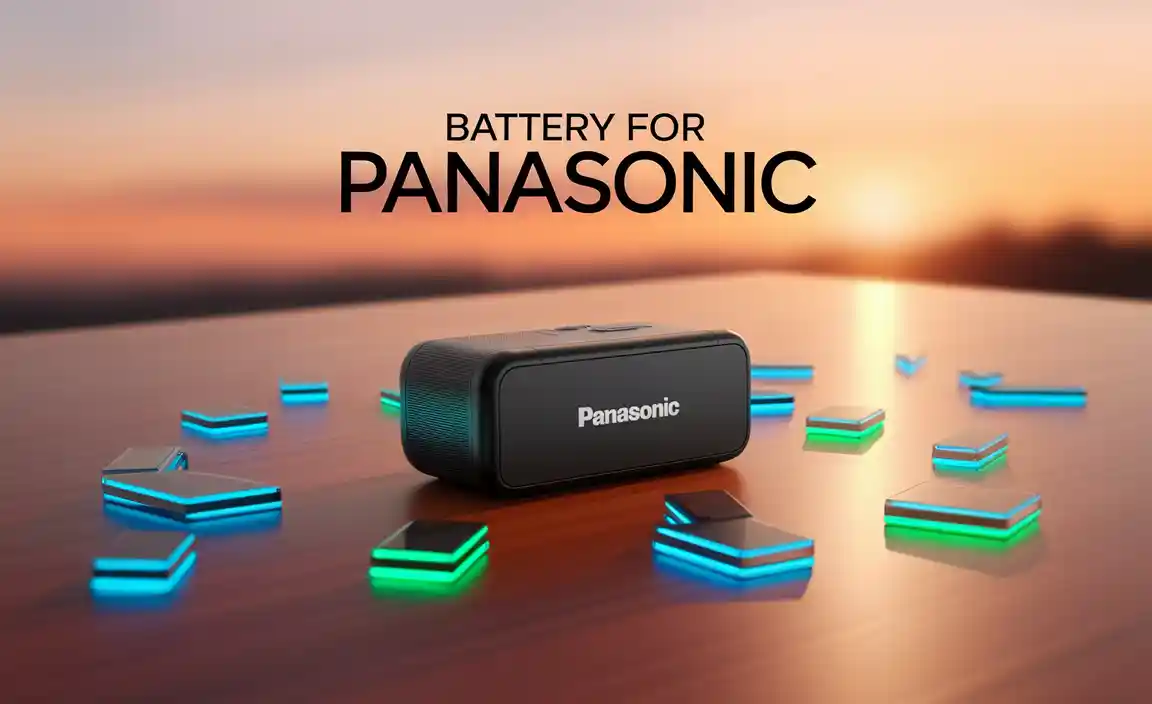Quick Summary: The HS code for a lithium-ion battery depends on its specific type and purpose. Generally, single lithium-ion cells or batteries fall under HS Code 8507.60, but variations exist for different applications like those in vehicles or portable electronics. Consulting customs authorities or a trade specialist is key for accurate classification.
HS Code for Lithium Ion Battery: Your Essential Guide
Are you trying to ship a lithium-ion battery overseas? Or perhaps you’re importing them for your business? It can feel like navigating a maze of numbers and regulations, and getting it wrong can cause costly delays or even fines. Don’t let the mystery of HS codes for lithium-ion batteries hold you back. We’re here to break it down in a way that’s simple and clear, just like checking your car’s oil or syncing your phone. We’ll guide you through understanding these codes, why they matter, and how to find the right one so your batteries can travel smoothly.
This guide will make the process straightforward, demystifying the Harmonized System (HS) codes essential for international trade. You’ll learn what these codes are, why they are so important for lithium-ion batteries, and how to accurately classify yours. Ready to power up your understanding and ensure your shipments meet all requirements?
What is an HS Code and Why Does it Matter for Batteries?
Think of an HS code as a universal product passport. The Harmonized System (HS) is an international nomenclature for the classification of products. Managed by the World Customs Organization (WCO), it’s used by customs authorities in more than 200 countries to identify products consistently. Each product is assigned a six-digit code, and countries can extend it to eight or ten digits for more specific classification.
For lithium-ion batteries, understanding the HS code is crucial for several reasons:
- Customs Duties and Taxes: The HS code determines the amount of duty and taxes you’ll pay when importing or exporting goods. Different codes can mean vastly different tariff rates.
- Trade Statistics: Governments use HS codes to track international trade flows, helping them understand economic trends and plan policies.
- Regulatory Compliance: Certain goods, especially those with safety or environmental implications like batteries, may be subject to specific regulations, import/export restrictions, or licensing requirements based on their HS code.
- Accurate Documentation: Correctly classifying your goods ensures that all your shipping and customs documentation is accurate, preventing delays, fines, or seizure of goods.
Lithium-ion batteries, due to their widespread use and inherent safety considerations (like potential fire hazards if mishandled), are subject to strict international regulations for transport and trade. The HS code is the first step in ensuring these regulations are met.
Decoding the HS Code for Lithium Ion Batteries
The most common HS code for lithium-ion batteries is found within Chapter 85 of the Harmonized System, which covers electrical machinery and equipment.
The Primary HS Code: 8507.60
Generally, primary lithium-ion cells and batteries fall under the HS code 8507.60. This code specifically covers:
- Lithium-ion accumulators (another term for rechargeable batteries).
This six-digit code is the foundation, but it’s important to note that countries often add more digits for finer distinctions. For example, a US or Canadian HTS (Harmonized Tariff Schedule) code might be 10 digits long.
Variations and Specific Applications
While 8507.60 is the general code, the specific end-use or manufacturing characteristics of a lithium-ion battery can lead to different classifications. This is where the “essential guide” part really comes into play. You need to look at the details.
Here are some common scenarios and how they might affect HS code classification:
- Batteries Assembled into Devices: If a lithium-ion battery is integrated into a device (like a laptop, smartphone, or electric vehicle), the HS code for the complete product would apply, not just the battery. For instance, a laptop would have its own HS code, and the battery, being a component, wouldn’t be classified separately.
- Batteries for Specific Vehicles: Lithium-ion batteries designed specifically for electric vehicles (EVs) or hybrid vehicles might fall under different subheadings within Chapter 87 (Vehicles other than railway or tramway rolling-stock). While 8507.60 is still often the base from the electrical component perspective, customs might guide towards a more specific vehicle-related classification or a supplementary code depending on the country’s tariff schedule. For example, a battery pack for an electric car imported as a spare part might ultimately be classified under a specific automotive part code that references its electrical nature.
- Portable Power Banks: Lithium-ion power banks (portable chargers) are also often classified under 8507.60, as they are essentially standalone lithium-ion batteries designed for charging other devices. However, some countries might have specific subheadings or require additional identifiers if the power bank has unique features like integrated solar panels or Wi-Fi capabilities.
- Specialized Industrial Batteries: Batteries for industrial applications, medical devices, or aerospace might have more specific HS codes depending on their unique characteristics and intended use.
The Importance of Official Classification
It is critical to understand that the HS code is not a matter of personal interpretation. The correct classification is determined by applying the General Rules for the Interpretation of the Harmonized System (GIRs). If you are unsure, the best approaches are:
- Consult the Customs Authority: Contact the customs authority of the importing country. They can provide definitive guidance or issue a Binding Tariff Information (BTI) ruling, which is legally binding.
- Work with a Customs Broker or Trade Specialist: These professionals have the expertise to navigate complex tariff schedules and ensure accurate classification.
- Refer to Trade Agreements and Online Tools: Many countries offer online tools and databases to help classify goods. For example, the United States International Trade Commission (USITC) provides the Harmonized Tariff Schedule of the United States (HTSUS).
Getting this wrong can lead to significant issues. For example, classifying a lithium-ion battery incorrectly could result in it being treated as a non-hazardous good when it requires special handling or packaging according to international transport regulations like those set by the International Air Transport Association (IATA) for air cargo.
Navigating the Harmonized System: Key Chapters and Headings
While 8507.60 is the most relevant, understanding a bit more about the HS structure can be helpful for complex situations.
Chapter 85: Electrical Machinery and Equipment
This is the chapter where most batteries, including lithium-ion, are found. It covers a vast range of electrical products.
- Heading 8507: Electric accumulators (rechargeable batteries), including their separators, whether or not rectangular (including square). This is where lithium-ion batteries are specifically addressed.
Other Potentially Relevant Chapters (for context or components)
While not for the battery itself, other chapters might be relevant if you’re shipping parts or integrated systems:
- Chapter 85: Other electrical components and devices.
- Chapter 87: Vehicles other than railway or tramway rolling-stock (where batteries for electric vehicles might be considered in context).
- Chapter 38: Miscellaneous chemical products (might be relevant for electrolyte components if shipped separately, though unlikely for finished batteries).
- Chapter 73-83: Covers various materials like iron, steel, aluminum, etc., that might be used in battery casings or battery pack structures.
Step-by-Step Guide to Finding Your Lithium Ion Battery HS Code
Let’s walk through how you can determine the correct HS code for your specific lithium-ion battery:
- Identify the Battery Type: Is it a single rechargeable lithium-ion cell? A lithium-ion battery pack? Is it designed for a specific device like a phone, laptop, or car? What is its Watt-hour (Wh) rating? This information is usually found on the battery itself or its packaging.
- Determine the Primary Function: Is the battery a standalone power source, or is it an integral part of a larger product? For example, a battery inside a power tool is usually classified with the power tool under its specific HS code. A replacement battery for the same power tool would likely fall under 8507.60 or a related subheading.
- Consult the WCO Nomenclature or National Tariff Schedule: Start with the World Customs Organization’s HS nomenclature. If you’re importing or exporting, use the official tariff schedule of the specific country you are dealing with. These are often available online.
- Locate the Relevant Heading: For lithium-ion batteries, you’ll begin by looking at Heading 8507.
- Drill Down to the Subheading: Within 8507, find the subheading that most accurately describes “electric accumulators, lithium-ion.” This is where you’ll likely find 8507.60.
- Check National Extensions (if applicable): Most countries use more than six digits. For example, Canada and the United States use 8- or 10-digit codes respectively. This is where more specific classifications for voltage, capacity, or intended use might appear.
- Consider UN Numbers and Transport Regulations: While not HS codes, batteries are often classified under UN numbers for transport safety. For example, lithium-ion batteries are commonly under UN3480 (for lithium-ion batteries) or UN3481 (for lithium-ion batteries contained in equipment or packed with equipment). These regulations, governed by bodies like IATA for air and the International Maritime Organization (IMO) for sea, often influence how customs sees the product. Ensure your battery complies with these transport rules, as non-compliance can lead to immediate customs issues.
- Verify with Experts: If you’re still uncertain after following these steps, do not guess. Contact the customs department of the importing country or a licensed customs broker.
Table: Common Lithium Ion Battery Types and Potential HS Codes
The following table provides general guidance. Always confirm with official sources for your specific transaction and country.
| Lithium Ion Battery Type | Description | Likely HS Code (6-digit) | Notes |
|---|---|---|---|
| Standalone Lithium Ion Cell | A single rechargeable lithium-ion cell. | 8507.60 | The most common classification. |
| Lithium Ion Battery Pack (general) | Multiple cells assembled into a pack, for general use (e.g., portable electronics, tools). | 8507.60 | Often classified under the cell code unless it’s part of a specific product. |
| Lithium Ion Power Bank | Portable device to recharge other electronics. | 8507.60 | Considered a battery pack for general use. |
| Lithium Ion Battery for Electric Vehicles (standalone replacement) | Large format battery pack for EVs, imported as a spare part. | 8507.60 | May have specific national subheadings under 8507 or be referenced under automotive parts (Chapter 87). Consult specific country’s HTS. |
| Lithium Ion Battery within a Manufactured Product | Battery integrated into a finished good (e.g., laptop, smartphone, medical device). | HS Code of the complete product | The battery is considered a component, not a separate item for classification. |
Disclaimer: This table is for informational purposes only and does not constitute professional customs advice. Always consult official tariff schedules and customs authorities.
Safety and Shipping Considerations
Beyond the HS code, lithium-ion batteries are classified as dangerous goods by many transportation authorities. This is due to their potential to overheat, catch fire, or explode under certain conditions. Proper handling, packaging, and declaration are mandatory.
- Packaging: Batteries must be packed to prevent short circuits. This often involves protecting terminals, keeping them separated, and using robust outer packaging.
- Documentation: Shipping papers must clearly declare the dangerous goods contained within. This includes the UN number, proper shipping name, hazard class, and packing group.
- Quantity Limitations: There are strict limits on the quantity of lithium-ion batteries that can be shipped per package, especially for air cargo.
- Regulations Bodies: Key regulations to be aware of include:
- IATA: For air transport.
- IMO (IMDG Code): For sea transport.
- ADR: For road transport in Europe.
- DOT: For transport within the United States.
Failure to comply with dangerous goods regulations can result in severe penalties, including hefty fines and even criminal charges. Always ensure your lithium-ion battery shipments meet all safety and transportation requirements as outlined by organizations like the Federal Aviation Administration (FAA) for air cargo.
Frequently Asked Questions (FAQ)
Q1: What is the most common HS code for lithium-ion batteries?
A1: The most common HS code for lithium-ion cells and batteries is 8507.60. This is a starting point, and countries may add digits for more specific classification.
Q2: Do I need a different HS code for a lithium-ion battery in a phone versus a separate replacement battery?
A2: Yes. If the battery is integrated into a finished product like a phone, you use the HS code for the phone. A standalone replacement battery would typically fall under 8507.60.
Q3: How do I find the HS code for a lithium-ion battery used in an electric car?
A3: Batteries specifically for electric vehicles are complex. While 8507.60 is the base, customs might have specific subheadings within 8507 or related headings in Chapter 87 (Vehicles). It is essential to consult the importing country’s HTS and possibly seek advice from an automotive customs specialist.
Q4: Can I just use the HS code 8507.60 for all my lithium-ion battery shipments?
A4: It’s risky. While 8507.60 is common, the exact classification can depend on voltage, capacity, intended use, and whether the battery is standalone or integrated. Always verify with the official tariff schedule of the importing country.
Q5: What are the risks of using an incorrect HS code for lithium-ion batteries?
A5: Incorrect HS codes can lead to paying the wrong duty rates, delays at customs, seizure of goods, fines, and increased scrutiny for future shipments. For dangerous goods like batteries, misclassification can also lead to serious safety violations.
Q6: Who can help me determine the correct HS code?
A6: You can consult the customs authority of the importing/exporting country, a licensed customs broker, or a trade compliance specialist. Many national customs agencies offer online tools to search for HS codes.
Q7: Are lithium-ion batteries always classified as dangerous goods for shipping?
A7: Yes, by most international transportation regulations (like IATA for air and IMDG for sea), lithium-ion batteries are considered dangerous goods and require specific packaging, labeling, and documentation, regardless of their HS code.
Conclusion
Understanding the HS code for your lithium-ion battery is a vital step for smooth international trade. While 8507.60 serves as the primary classification for many standalone lithium-ion cells and batteries, the nuances of their application, size, and integration into devices means that accuracy is paramount. Remember that this code dictates duties, taxes, and regulatory compliance, making any mistake costly.
Always start by identifying the specific characteristics of your battery and its intended use. Then, consult the official Harmonized Tariff Schedule of the importing country. When in doubt, working with a customs broker or contacting the relevant customs authority will provide the certainty you need. Coupled with strict adherence to dangerous goods transportation regulations, a correct HS code ensures your lithium-ion batteries reach their destination safely and without unnecessary hurdles. Powering your business forward means navigating these details with confidence and precision.



